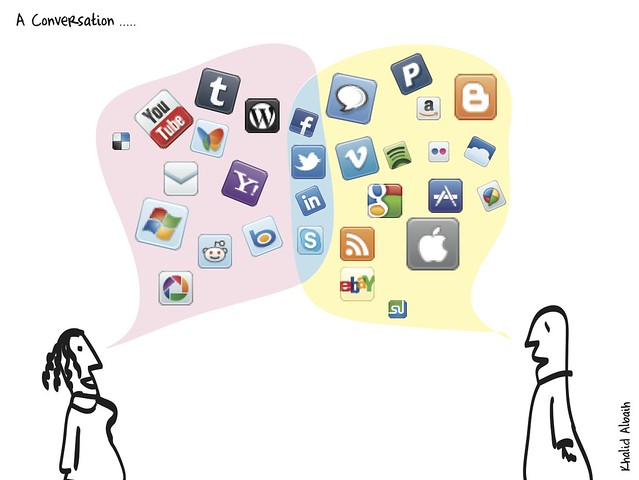Earlier this week, Liz Piazza asked:
@hickstro Can various forms of new digital media (ie social networking, gaming) be effective in all content areas?
— Liz Piazza (@mspizza5) September 22, 2014
At the time, I didn’t think I could answer in 140 characters, and I’m glad that I didn’t try.
There are quite a few things to consider when answering this question, and perhaps it was simply the word “all” that threw me for a loop. Well, yes, in all content areas. I think. Wait, maybe not all. Most? Some?
You can see how I pondered the question, turning it over in my mind.
In doing so, however, I also began to think about the goals for content area literacy or, as it is being described more and more — especially by Tim and Cindy Shanahan — disciplinary literacy. And, in fact, their definition is at the crux of how I would answer the question. They believe that “Most students need explicit teaching of sophisticated genres, specialized language conventions, disciplinary norms of precision and accuracy, and higher-level interpretive processes” (43) and “the nature of the disciplines is something that must be communicated to adolescents, along with the ways in which experts approach the reading of text. Students’ text comprehension, we believe, benefits when students learn to approach different texts with different lenses.” (51).

So, my short answer to Liz’s question would have been, “Yes, various forms of new media such as social networking and gaming can be successfully used in various content areas, perhaps even all of them,” as evidenced by tools such as EASE History, the Science Game Center, the National Library of Virtual Manipulatives, or any of the dozens of options available on this K-12 Tech Tools wiki. Students have created videos about science experiments and historical reenactments, and acted as characters from literature or actual historical figures on Twitter and Facebook.
So, yes, they can.
The deeper answer, and the one that I have been struggling with over the week, however, is a little more complicated.
If we think about the Shanahans’ ideas that content area literacy is quite a bit more specific than simply applying a general set of strategies for writing-across-the-curriculum — as good as those strategies may be — then there has to be something deeper, something more rhetorical, to the idea of composing a disciplinary text with multimedia. Returning to Liz’s question, and pivoting it just a bit, I wonder: Can various forms of new digital media be effective as a tool for composing in all disciplines?
Here, the answer gets a bit murkier, mostly because I am not a disciplinary expert outside of the field of writing. On the one hand, I can imagine that expressing disciplinary knowledge in math, science, history, or the arts — demonstrating a way of thinking through expert interpretation, analysis, and communication — could happen in any form of media. Heck, a whole movement in education, the flipped classroom, has come about because teachers have taken up the idea that they can create and deliver lessons via online video at least as effectively, if not more so, than they can do in the classroom. So, multimedia exploration of disciplinary knowledge is, conceivably at least, possible.
On the other hand, I wonder what is lost when transitioning from writing (words into sentences into paragraphs types of writing) into multimedia composition? Are there components of disciplinary thinking that don’t translate well from words to images to video to links to… whatever other form of media we can imagine?
At the same time, what do disciplinary experts gain in the process of being able to use images, voice, video, links, and other forms of media? How can they use multimedia to more fully express their ideas? What is it that we want to know about learning math — or science or music or art or anything — that multimedia can offer above and beyond print?
Liz’s question has pushed my thinking this week, and for that I thank her. I’m hoping that this response pushes her thinking, too, as well as yours. What does it mean to compose, as a disciplinary expert, with digital writing tools?
Lastly, and on a related note, for more of my thoughts on disciplinary literacy from an English Language Arts perspective, this chapter could be useful:

This work is licensed under a Creative Commons Attribution-NonCommercial-ShareAlike 4.0 International License.


